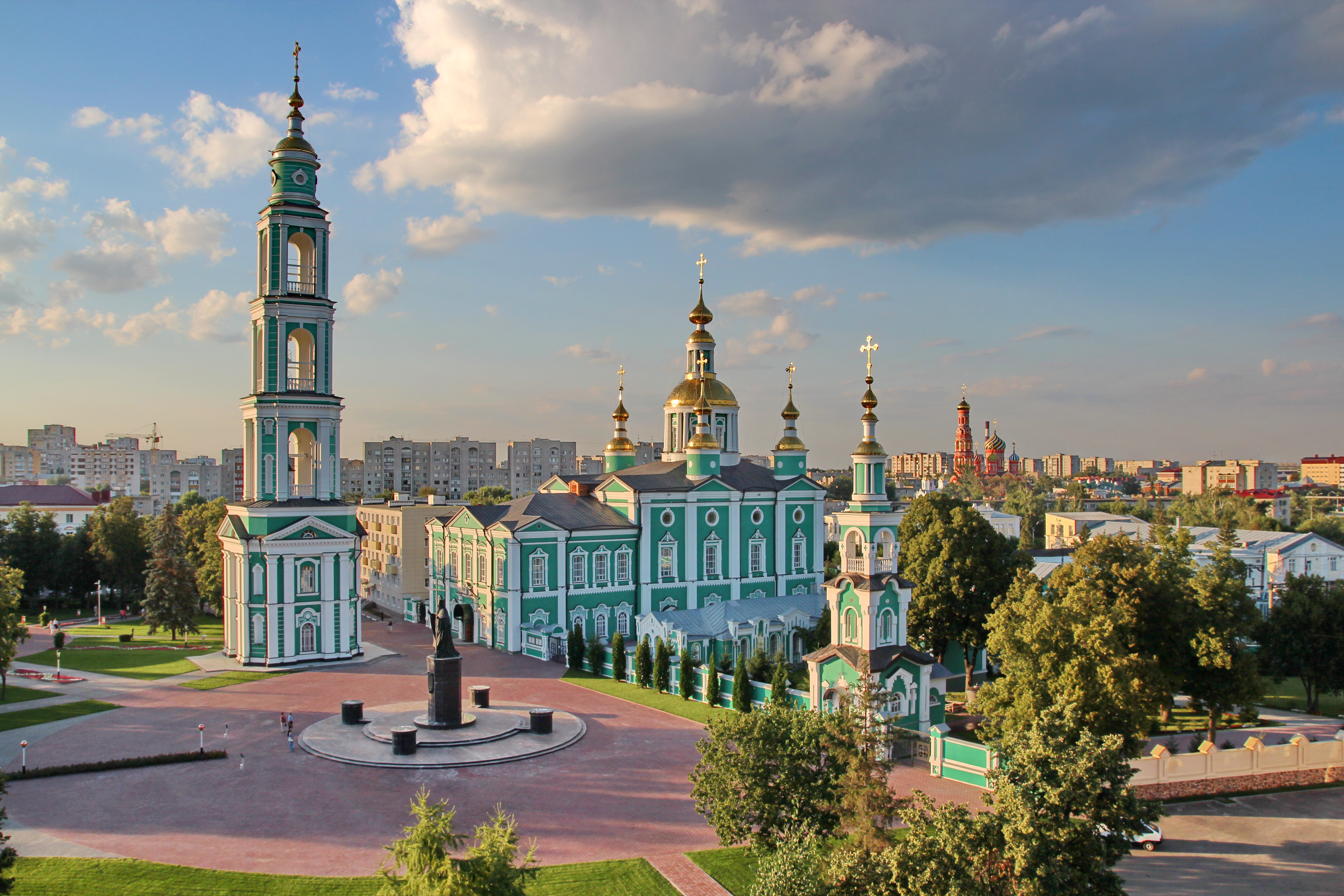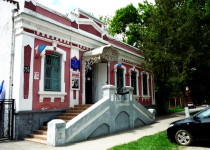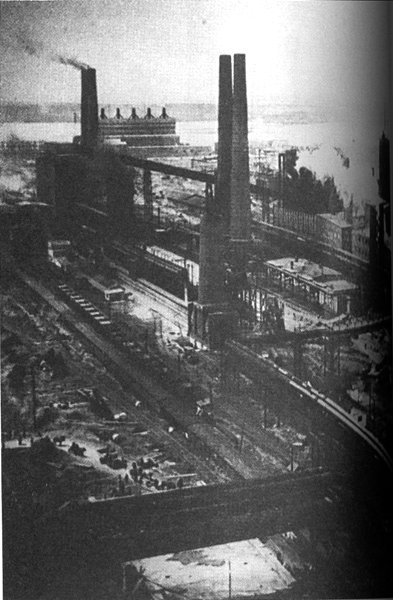|
Union Of Slavic Native Belief Communities
The Union of Slavic Communities of the Slavic Native Belief (acronym: USC SNB; Russian: ''–°–æ—é–∑ –°–ª–∞–≤—è–Ω—Å–∫–∏—Ö –û–±—â–∏–Ω –°–ª–∞–≤—è–Ω—Å–∫–æ–π –Ý–æ–¥–Ω–æ–π –í–µ—Ä—ã'', Russian acronym: –°–°–û –°–Ý–í) is one of the largest Russian organisations of Slavic Native Faith (Rodnovery) groups, established in 1997, and officially recognised by the government in 2014 (becoming the first Rodnover organisation to be recognised by the Russian government). History The Union of Slavic Native Belief Communities was established in 1997 by initiative of three constituent communities from Moscow, Kaluga and Obninsk. On 19 July 1997 Vadim Stanislavovich Kazakov from Kaluga's community was elected as the leader of the USC SNB. On 21 July 2011 Kazakov resigned and Maksim Ionov became his successor through a vote held by the ''veche'' (assembly) on 23 July. Annually, on Perun's Day (20 July) the "All-Slavic Veche" takes place in Kaluga. The assembly deals with issues including the further wideni ... [...More Info...] [...Related Items...] OR: [Wikipedia] [Google] [Baidu] |
Acronym
An acronym is a word or name formed from the initial components of a longer name or phrase. Acronyms are usually formed from the initial letters of words, as in ''NATO'' (''North Atlantic Treaty Organization''), but sometimes use syllables, as in ''Benelux'' (short for ''Belgium, the Netherlands, and Luxembourg''). They can also be a mixture, as in ''radar'' (''Radio Detection And Ranging''). Acronyms can be pronounced as words, like ''NASA'' and ''UNESCO''; as individual letters, like ''FBI'', ''TNT'', and ''ATM''; or as both letters and words, like '' JPEG'' (pronounced ') and ''IUPAC''. Some are not universally pronounced one way or the other and it depends on the speaker's preference or the context in which it is being used, such as '' SQL'' (either "sequel" or "ess-cue-el"). The broader sense of ''acronym''—the meaning of which includes terms pronounced as letters—is sometimes criticized, but it is the term's original meaning and is in common use. Dictionary and st ... [...More Info...] [...Related Items...] OR: [Wikipedia] [Google] [Baidu] |
Balashov (town)
Balashov (russian: Балашо́в) is a town in Saratov Oblast, Russia, located on the Khopyor River. Population: It was previously known as ''Balashovo'' (until 1780). History It has been known as the '' selo'' of Balashovo () since the end of the 18th century. In 1780, it was granted town status and became known as Balashov. Between 1954 and 1957, it was capital of the Balashov Oblast of Russian SFSR. Administrative and municipal status Within the framework of administrative divisions, Balashov serves as the administrative center of Balashovsky District Balashovsky District (russian: Балашовский райо́н) is an administrativeCharter of Saratov Oblast and municipalLaw #78-ZSO district (raion), one of the thirty-eight in Saratov Oblast, Russia. It is located in the west of the oblast ..., even though it is not a part of it. As an administrative division, it is incorporated separately as Balashov City of federal subject significance, Town Under Oblast Jurisd ... [...More Info...] [...Related Items...] OR: [Wikipedia] [Google] [Baidu] |
Modern Pagan Organizations Based In Russia
Modern may refer to: History *Modern history ** Early Modern period ** Late Modern period *** 18th century *** 19th century *** 20th century ** Contemporary history * Moderns, a faction of Freemasonry that existed in the 18th century Philosophy and sociology * Modernity, a loosely defined concept delineating a number of societal, economic and ideological features that contrast with "pre-modern" times or societies ** Late modernity Art * Modernism ** Modernist poetry * Modern art, a form of art * Modern dance, a dance form developed in the early 20th century * Modern architecture, a broad movement and period in architectural history * Modern music (other) Geography *Modra, a Slovak city, referred to in the German language as "Modern" Typography * Modern (typeface), a raster font packaged with Windows XP * Another name for the typeface classification known as Didone (typography) * Modern, a generic font family name for fixed-pitch serif and sans serif fonts (for exampl ... [...More Info...] [...Related Items...] OR: [Wikipedia] [Google] [Baidu] |
Rodnover Confederation
The Rodnover Confederation (''Konfederacja Rodzimowiercza'') is a confederation of Polish Rodnover religious organisations, founded on 23 August 2015 during the 3rd All-Poland Rodnover Congress in Łysogóry. Since 2016 the Rodnover Confederation has organised the All-Poland Rodnover Congress and published the Rodnover Calendar. In May 2016, after a break of 500 years, on behalf of the Rodnover Confederation, the first celebration of the ''Stado'' festival was organised. It was the largest ceremony of this kind in the modern history of the Polish Rodnover movement. Members Founders: * "Gontyna" association * "Żertwa" association * Pomeranian Rodnovers (later renamed to Association of Pomeranian Rodnovers "Jantar") * Drzewo Przodków * Krąg Radogost * "Kałdus" association * WiD Group * Gromada "Swarga" * Rodzima Wiara Rodzima Wiara (meaning "Native Faith") is a Polish Rodnover religious organization, founded in 1996 by Stanisław Potrzebowski in Wrocław as ''Zrzeszenie Rodzi ... [...More Info...] [...Related Items...] OR: [Wikipedia] [Google] [Baidu] |
Ynglism
Ynglism ( Russian: Инглии́зм; Ynglist runes: ), institutionally the Ancient Russian Ynglist Church of the Orthodox Old Believers–Ynglings (Древнерусская Инглиистическая Церковь Православных Староверов–Инглингов, ''Drevnerusskaya Ingliisticheskaya Tserkov' Pravoslavnykh Staroverov–Inglingov''), is a direction of Rodnovery formally established in 1992 by Aleksandr Yuryevich Khinevich (b. 1961) in Omsk, Russia, and legally recognised by the Russian state in 1998, although the movement was already in existence in unorganised forms since the 1980s. The adherents of Ynglism call themselves "Orthodox", "Old Believers", "Ynglings" or "Ynglists". The Ynglist Church was described by some scholars as having a complex and well-defined doctrine and liturgy, an authoritative leading hierarchy, and as focusing on esoteric teachings. The Ynglists regard themselves as preserving the true, orthodox (i.e. in accordance ... [...More Info...] [...Related Items...] OR: [Wikipedia] [Google] [Baidu] |
Kemerovo
Kemerovo ( rus, –ö–µÃÅ–º–µ—Ä–æ–≤–æ, p=Ààk ≤em ≤…™r…ôv…ô) is an industrial city and the administrative center of Kemerovo Oblast, Russia, located at the confluence of the Iskitimka and Tom Rivers, in the major coal mining region of the Kuznetsk Basin. Population: The city was known as ''Shcheglovsk'' until March 27, 1932. History Kemerovo is an amalgamation of, and successor to, several older Russian settlements. A waypoint named Verkhotomsky ''ostrog'' was established nearby in 1657 on a road from Tomsk to Kuznetsk fortress. In 1701, the settlement of Shcheglovsk was founded on the left bank of the Tom; soon it became a village. By 1859, seven villages existed where modern Kemerovo is now: Shcheglovka (or Ust-Iskitimskoye), Kemerovo (named in 1734), Yevseyevo, Krasny Yar, Kur-Iskitim (Pleshki), Davydovo (Ishanovo), and Borovaya. In 1721, coal was discovered in the area. The first coal mines were established in 1907, later a chemical plant was established in 1916. By 1917, the po ... [...More Info...] [...Related Items...] OR: [Wikipedia] [Google] [Baidu] |
Smolensk
Smolensk ( rus, –°–º–æ–ª–µ–Ω—Å–∫, p=sm…êÀàl ≤ensk, a=smolensk_ru.ogg) is a city and the administrative center of Smolensk Oblast, Russia, located on the Dnieper River, west-southwest of Moscow. First mentioned in 863, it is one of the oldest cities in Russia. Population: The city has been destroyed several times throughout its long history because it was on the invasion routes of various empires. Smolensk is known for its electronics, textiles, food processing, and diamond faceting industries. Etymology The name of the city is derived from the name of the Smolnya River. Smolnya river flows through Karelian and Murmansk areas of north-western Russia. The origin of the river's name is less clear. One possibility is the old Slavic word () for black soil, which might have colored the waters of the Smolnya. An alternative origin could be the Russian word (), which means resin, tar, or pitch. Pine trees grow in the area, and the city was once a center of resin processing and t ... [...More Info...] [...Related Items...] OR: [Wikipedia] [Google] [Baidu] |
Tambov
Tambov (, ; rus, –¢–∞–º–±–æ–≤, p=t…êmÀàbof) is a types of inhabited localities in Russia, city and the administrative center of Tambov Oblast, Central Federal District, central Russia, at the confluence of the Tsna River (Moksha basin), Tsna and Studenets Rivers, about south-southeast of Moscow. Population: 280,161 (Russian Census (2010), 2010 Census); 293,658 (Russian Census (2002), 2002 Census); Etymology The name "Tambov" originates from the Moksha language, Mokshan word( mdf, —Ç–æ–º–±–∞–ª–µ, tombale, the other side, the remote one) Geography Urban layout In terms of its layout, Tambov was no different from other fortified cities - the Kremlin, the prison and a small settlement. The chosen place was in full compliance with the requirements of the fortification. From the north and east, the new fortress was washed by rivers, and from the west and south it was protected by artificial ditches filled with water by the Studenets River. The Kremlin was surrounded by a six-meter w ... [...More Info...] [...Related Items...] OR: [Wikipedia] [Google] [Baidu] |
Slavyansk-na-Kubani
Slavyansk-on-Kuban (russian: Славянск-на-Куба́ни) is a town in Krasnodar Krai, Russia, located in the Kuban River delta. Population: 56,000 (1975). History Slavyansk originated in the Middle Ages as ''Copa'' or ''Coparia'', a Genoese trade outpost controlled by the Ghisolfi family and was one of the most important Genoese colonies in the Black Sea area. After the fall of the Genoese power in the Pontic region, the site was abandoned until 1747 when the Crimean Khanate erected a small fort, known in Russian sources as ''Kopyl''. After the conquest of the Taman Peninsula by the Russian Empire, the Tatar fort gave way to the Cossack '' stanitsa'' of ''Kopylskaya''. In 1865, it was renamed after the Slavyansky regiment that had been quartered there under Catherine the Great. In 1958, it was incorporated as the town of Slavyansk-na-Kubani (so called in order to distinguish it from the eponymous city in Ukraine).. The history of Slavyansk dates backs to ... [...More Info...] [...Related Items...] OR: [Wikipedia] [Google] [Baidu] |
Magnitogorsk
Magnitogorsk ( rus, –ú–∞–≥–Ω–∏—Ç–æ–≥–æÃÅ—Ä—Å–∫, p=m…ô…°n ≤…™t…êÀà…°orsk, ) is an industrial city in Chelyabinsk Oblast, Russia, located on the eastern side of the extreme southern extent of the Ural Mountains by the Ural River. Its population is It was named after Mount Magnitnaya, a geological anomaly that once consisted almost completely of iron ore, around 55% to 60% iron. It is the second-largest city in Russia that is not the administrative centre of any federal subject or district. Magnitogorsk contains the largest iron and steel works in the country: Magnitogorsk Iron and Steel Works. The official motto of the city is "the place where Europe and Asia meet", as the city occupies land in both Europe and Asia. Magnitogorsk is one of only two planned socialist realist settlements ever built (the other being Nowa Huta in Poland). History Foundation Magnitogorsk was founded in 1743 as part of the Orenburg Line of forts built during the reign of the Empress Elizabeth. ... [...More Info...] [...Related Items...] OR: [Wikipedia] [Google] [Baidu] |
Ozersk of Samara Oblast
{{Set index article, populated places in Russia ...
Ozyorsk (russian: Озёрск) or Ozersk () is the name of several inhabited localities in Russia. ;Urban localities * Ozyorsk, Chelyabinsk Oblast, a town in Chelyabinsk Oblast *Ozyorsk, Kaliningrad Oblast, a town in Ozyorsky District of Kaliningrad Oblast ;Rural localities * Ozersk, Samara Oblast, a settlement in Bolsheglushitsky District Bolsheglushitsky District (russian: Большеглуши́цкий райо́н) is an administrativeCharter of Samara Oblast and municipalLaw #189-GD district (raion), one of the twenty-seven in Samara Oblast, Russia. It is located in the south ... [...More Info...] [...Related Items...] OR: [Wikipedia] [Google] [Baidu] |
Anapa
Anapa (russian: Ана́па, ) is a town in Krasnodar Krai, Russia, located on the northern coast of the Black Sea near the Sea of Azov. Population: History The area around Anapa was settled in antiquity. It was originally a major seaport (Sinda) and then the capital of Sindica. The colony of Gorgippia ( el, Γοργιππία) was built on the site of Sinda in the 6th century BCE by Pontic Greeks, who named it after a king of the Cimmerian Bosporus. In the 2nd and 3rd centuries BCE, Gorgippia flourished as part of the Bosporan Kingdom, as did its guild of shipowners, which controlled maritime trade in the eastern part of the Black Sea. A fine statue of Neokles (a local potentate, son of Herodoros) was unearthed by Russian archaeologists and is now on exhibit at the Russian Museum. Gorgippia was inhabited until the 3rd century CE, when it was overrun by neighbouring native tribes. These tribes, of Circassian or Adyghe origin (specifically of the Natkhuay tribe), gave Anapa its ... [...More Info...] [...Related Items...] OR: [Wikipedia] [Google] [Baidu] |



